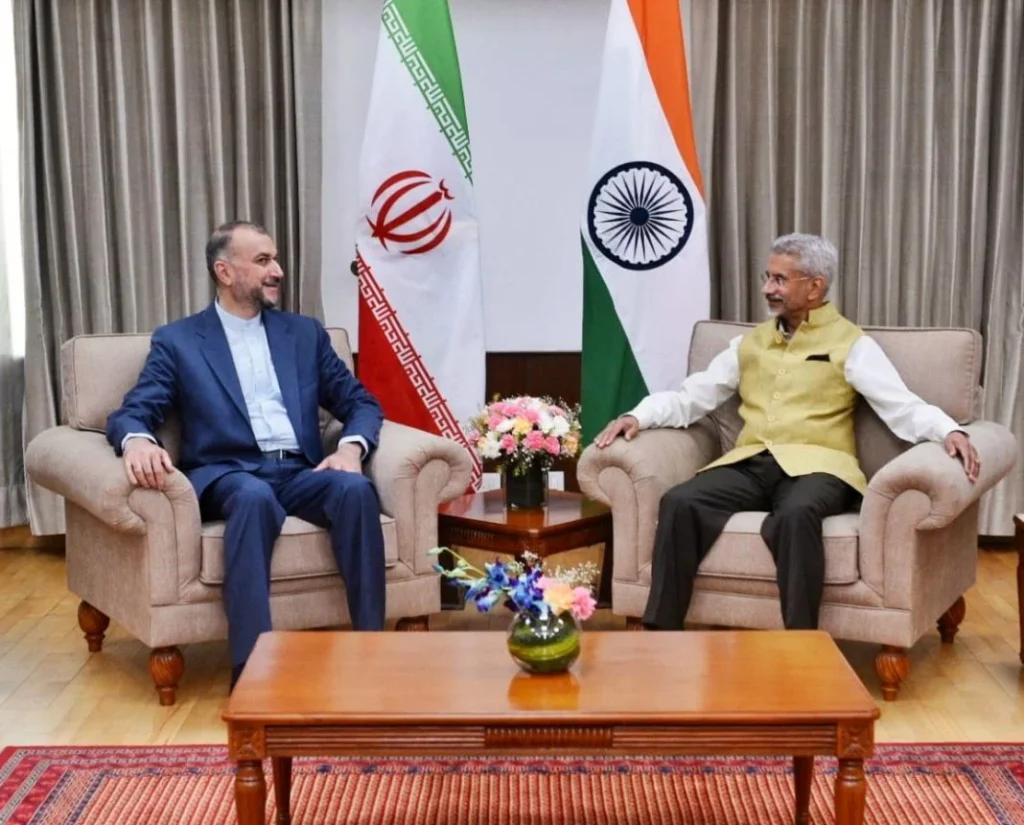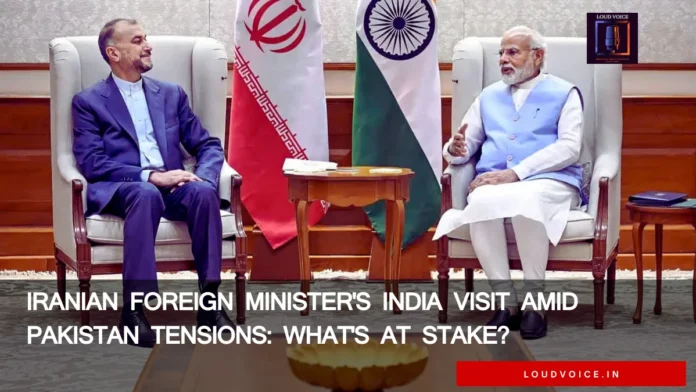Key Takeaways
- Iranian Foreign Minister’s India Visit comes just days after precision Indian strikes on terror camps in Pakistan and PoK, adding geopolitical weight to the 20th India-Iran Joint Commission Meeting.
- Aiming to strengthen bilateral ties in the areas of trade, energy, and regional security, the gathering commemorates the 75th anniversary of the India-Iran Friendship Treaty.
- Iran’s recent mediation efforts between India and Pakistan signal Tehran’s evolving regional diplomacy strategy.
- India maintains its hard stance on terrorism, rejecting any third-party mediation, even as Iran calls for peace post the Pahalgam attack.
- Strategic cooperation on Chabahar Port and regional stability remains high on the agenda for both sides.
Why Iran’s Foreign Minister Just Landed in New Delhi
In a tightly watched diplomatic development, Iranian Foreign Minister Seyed Abbas Araghchi touched down in New Delhi just a day after India’s precision strikes on nine terror camps in Pakistan and Pakistan-occupied Kashmir (PoK). The timing of this visit is no coincidence—it reflects a layered regional calculus playing out between New Delhi, Tehran, and Islamabad.
But beyond the high optics, what’s really at stake here? Let’s break it down.
The 75-Year Friendship and a Timely Commission Meeting
This visit coincides with the 75th anniversary of the India-Iran Friendship Treaty, a symbolic milestone that is now under the spotlight amid a shifting geopolitical landscape. Araghchi, on his first official visit since assuming office in August 2024, co-chaired the 20th India-Iran Joint Commission Meeting—a high-level dialogue focused on reviewing and strengthening bilateral ties.
Randhir Jaiswal, a spokesperson for the Ministry of External Affairs, welcomed Araghchi on X:
“Warm welcome to FM Seyed Abbas Araghchi… An opportunity to review and enhance bilateral cooperation on the 75th Anniversary of the India-Iran Friendship Treaty.”
On the Table: Trade, Energy, and Strategic Connectivity
One of the primary topics on the agenda is enhancing bilateral trade, which has been significantly affected due to sanctions on Iran and logistical bottlenecks post-COVID. India remains interested in Iran’s vast energy reserves, particularly oil and natural gas, while Iran views India as a crucial partner in its East-facing economic strategy.
Chabahar Port, developed with Indian assistance, remains a cornerstone of this partnership. The strategic port offers India direct access to Central Asia, bypassing Pakistan. The recent operational handover of a key terminal to India reinforces both nations’ commitment to deeper maritime and trade collaboration.
“Chabahar is not just a port—it’s a corridor of trust between India and Iran,” said an unnamed MEA official familiar with the matter.

A Visit Shadowed by Regional Tensions: Reading Between the Lines
Araghchi’s arrival comes fresh off his visit to Pakistan, where he met Prime Minister Shehbaz Sharif and Army Chief Asim Munir. The stakes have never been higher, especially since India recently launched surgical strikes in retaliation for the Pahalgam terror incident, a vicious assault that claimed the lives of 26 tourists.
While neither side officially confirmed the topic, diplomatic sources suggest the situation with Pakistan is indeed on the informal agenda. Iran has repeatedly advocated for de-escalation and has a history of acting as a regional peacemaker.
In reality, Araghchi called for “peace to prevail in the neighborhood” on X soon after the Pahalgam tragedy. Despite India’s persistent rejection of outside mediation, sources surmise that Pakistan might have subtly urged Tehran to allow backchannel communication.
“Iran is uniquely positioned to talk to both India and Pakistan, but India’s red line remains firm—no third-party mediation,” a retired Indian diplomat noted.
Why This Visit Really Matters
Iran’s engagement with India at this moment sends a strategic message—not just to Islamabad, but to global stakeholders watching South Asia’s stability. At a time when regional tensions are flaring, Tehran is signaling its desire to strengthen ties with New Delhi beyond religious, cultural, or historical commonalities.
Araghchi’s meetings with India’s External Affairs Minister S. Jaishankar and President Droupadi Murmu are expected to touch on a broad spectrum of issues—from counter-terrorism cooperation and energy security to new investments in infrastructure and trade facilitation.
The Broader Geopolitical Chessboard
India and Iran share concerns over the instability in Afghanistan, cross-border terrorism, and maritime security in the Gulf. Both nations are eyeing increased coordination in regional multilateral forums such as the Shanghai Cooperation Organisation (SCO) and INSTC (International North-South Transport Corridor).
But it’s also worth noting that Iran’s relationship with China and Russia adds another layer of complexity. As Iran continues to strengthen its China-Russia axis, India is carefully balancing strategic interests, especially amid its growing ties with the U.S.
“India will continue to engage with Iran on its own terms—bilateral interests come first, not alliances,” said a policy analyst at ORF (Observer Research Foundation).
What’s Next: Walking the Tightrope
With tensions simmering across the subcontinent, Araghchi’s visit represents both a diplomatic opportunity and a high-wire act. While Iran offers warm rhetoric and calls for peace, India remains focused on its zero-tolerance policy toward terrorism and cross-border infiltration.
If Tehran can play a constructive role without stepping into the mediator’s shoes, the door remains open for enhanced strategic cooperation.
Conclusion
Araghchi’s visit may be cloaked in ceremony and official protocol, but its true value lies in the subtext. As New Delhi asserts its strategic autonomy and tightens its grip on regional security, Iran seeks a balanced partnership rooted in mutual respect and long-term vision. Amid rising geopolitical temperatures, this visit could either be a diplomatic footnote—or the start of a recalibrated alliance that redefines the Indo-Iranian relationship for years to come.


